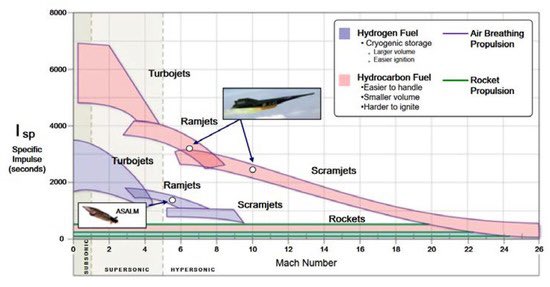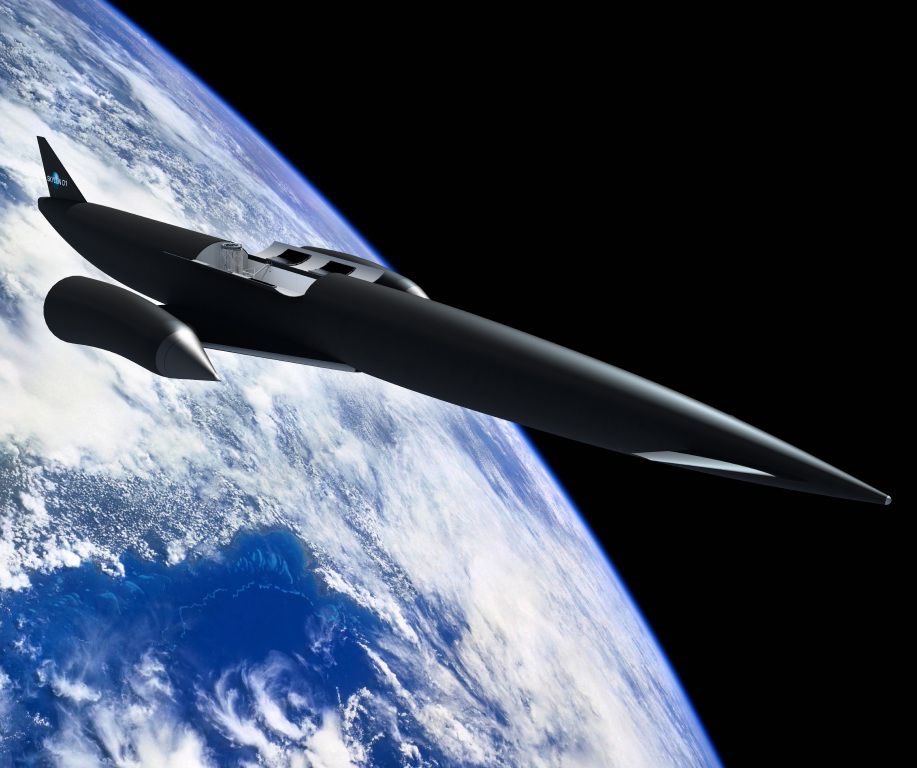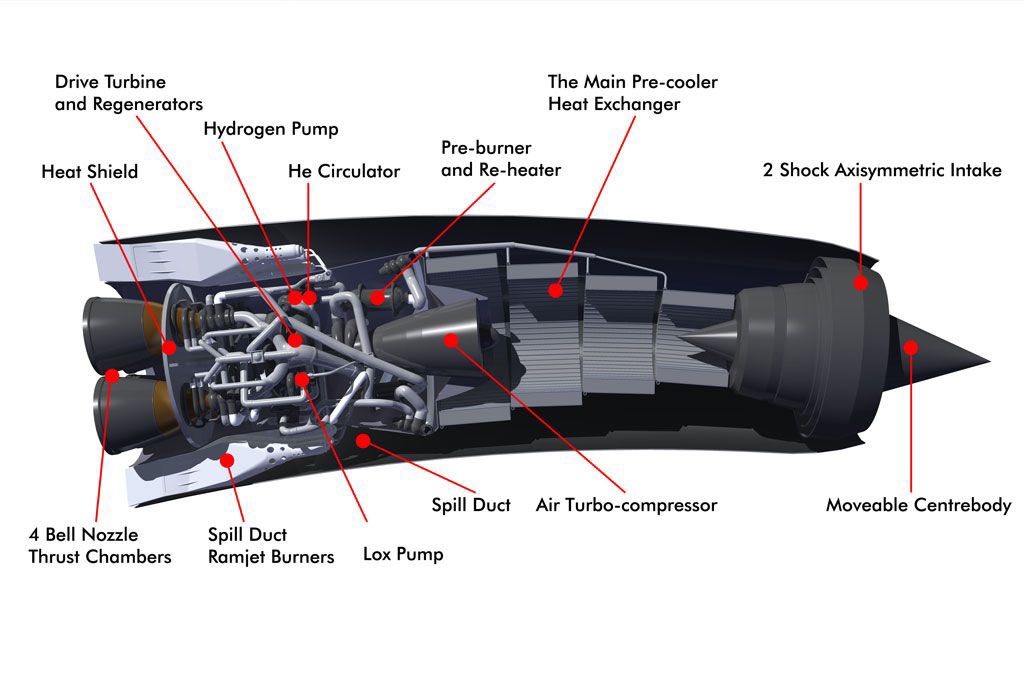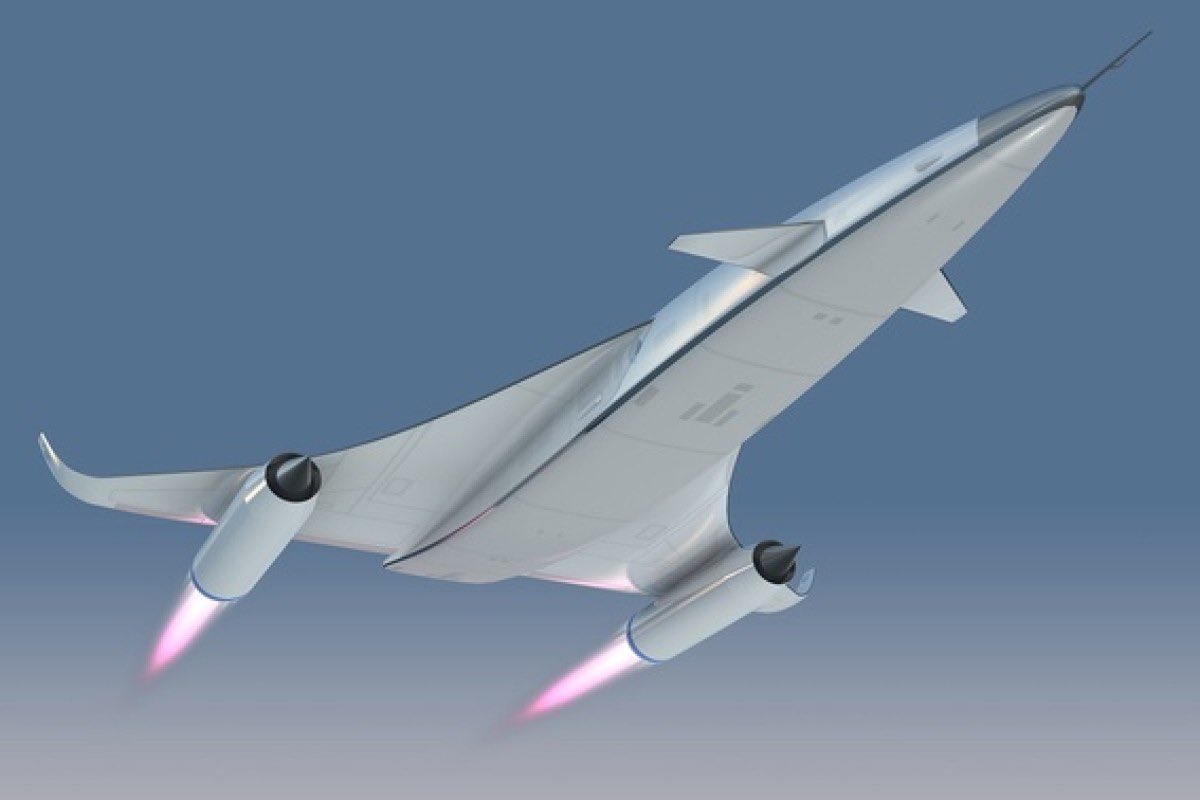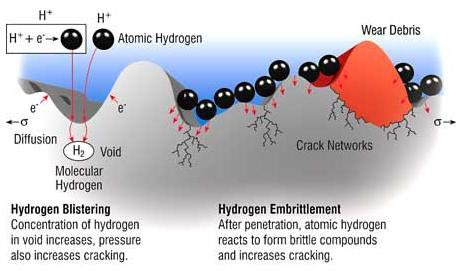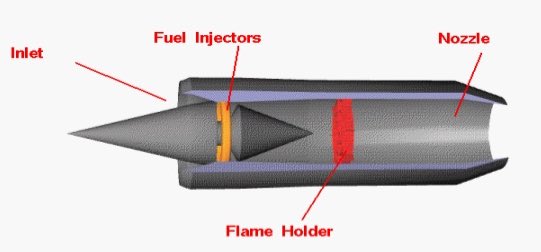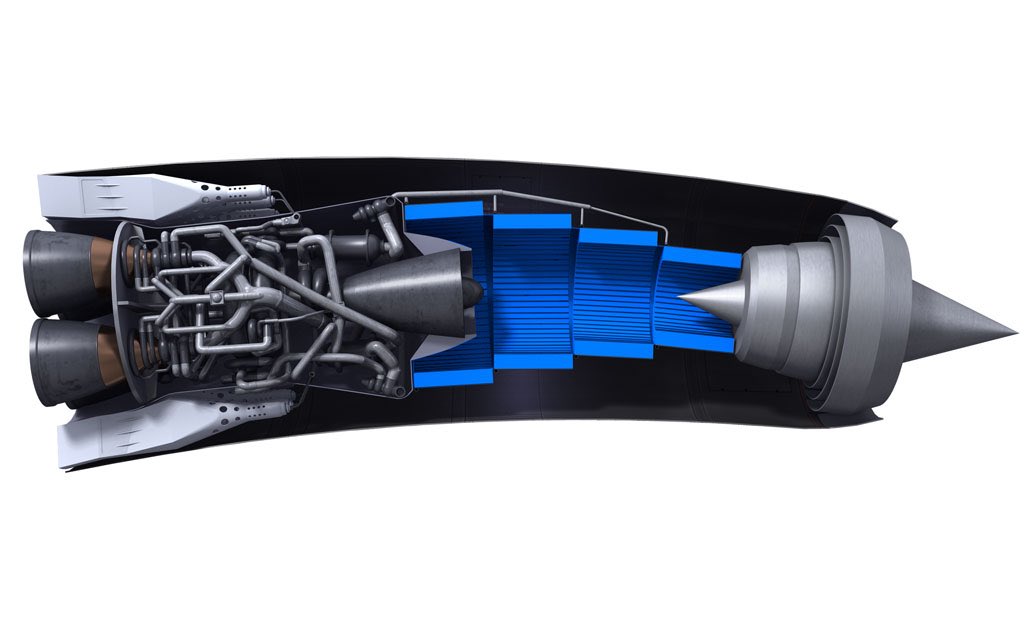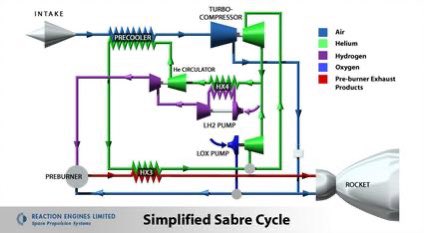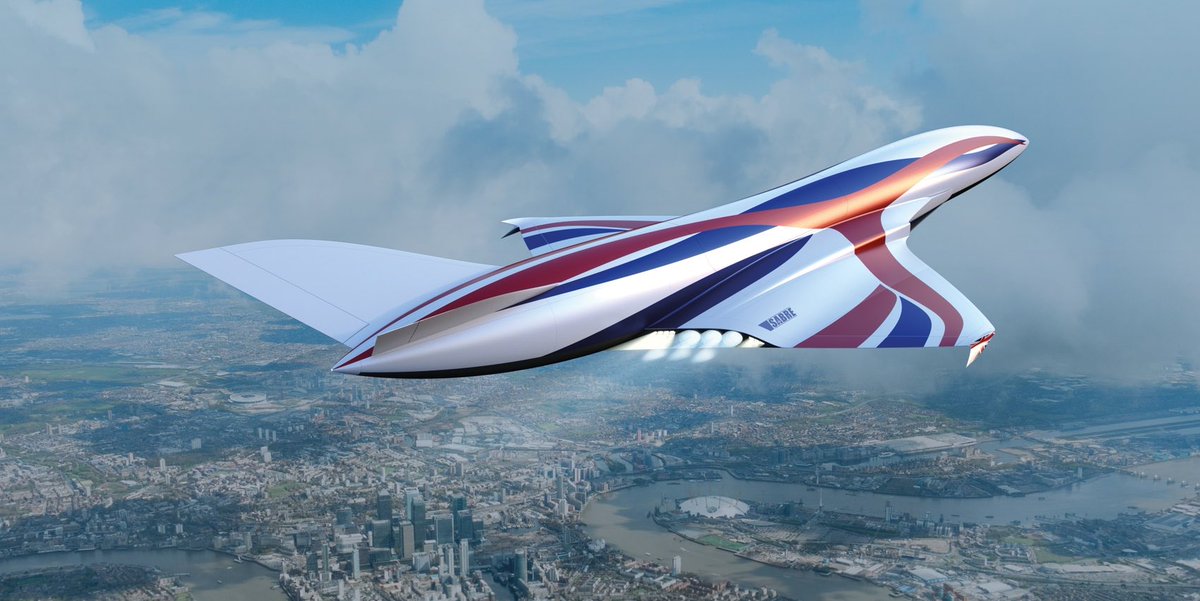SABRE ENGINE THREAD
If you haven’t heard, @ReactionEngines is working on one of the coolest (& most tangibly real) combined-cycle hypersonic engines in existence. Designed to power vehicles from zero to orbital speeds, this has the potential to be a game-changer (thread) #AvGeek
If you haven’t heard, @ReactionEngines is working on one of the coolest (& most tangibly real) combined-cycle hypersonic engines in existence. Designed to power vehicles from zero to orbital speeds, this has the potential to be a game-changer (thread) #AvGeek
So backing up a bit, the motivation for this type of engine is basically that it’s tough to move things really fast, your options:
-Gas turbine: Mach 0-3ish
-Ram/scramjet: M 3-12+ (0 static thrust)
-Rocket: M 0-20++ (BUT requires multiple stages and vehicle is 90%+ fuel)
-Gas turbine: Mach 0-3ish
-Ram/scramjet: M 3-12+ (0 static thrust)
-Rocket: M 0-20++ (BUT requires multiple stages and vehicle is 90%+ fuel)
In summary, if you want to go faster than M~3 (~2,400 mph) you have to use a rocket OR accelerate a ram/scramjet to supersonic speeds. This is where combined cycle concepts come into play—what if we could combine these engine types into a single device that covers more op space?
There are some different ways to do this, some involving rockets and some that don’t. For some background on turbine-based combine-cycles check out this thread: https://twitter.com/drchriscombs/status/1268637478828879876
And we covered rocket-based combined cycles (RBCCs) in this thread. These are mostly for SSTO concepts since rockets aren’t ideal for moderate-speed atmospheric cruise that you would want in a vehicle w a jet aircraft mission profile. https://twitter.com/drchriscombs/status/1269951828319514625
Now back to the SABRE ENGINE. SABRE stands for Synergetic Air Breathing Rocket Engine and has been in the works for 30+ yrs as the core of the proposed Skylon single-stage-to-orbit (SSTO) space plane. The hope is this could make it more affordable to get to space.
How does SABRE work?
It’s a take on the rocket-based combined-cycle concept where thrust is initially provided by an air-breathing rocket engine. After accelerating to hypersonic speeds and high-altitude (air is thin) it converts to a traditional liquid rocket engine.
It’s a take on the rocket-based combined-cycle concept where thrust is initially provided by an air-breathing rocket engine. After accelerating to hypersonic speeds and high-altitude (air is thin) it converts to a traditional liquid rocket engine.
On the air-breathing rocket side, the engine sucks in & compresses (turbine at low speeds, then ramjet) outside air to serve as the rocket’s oxidizer. The compressed air is then mixed w/ stored liquid hydrogen fuel and ignited, producing exhaust & thrust through a rocket nozzle.
The big efficiency advantage here that Reaction hopes will enable SSTO is that now you’re pulling in your oxidizer from the atmosphere, which reduces the weight you need to carry and can eliminate the need for staging.
This engine is actually based largely on the Rolls Royce & BAe RB545 engine concept from the canceled 1980s HOTOL space plane program. So this isn’t an entirely new concept and has been tried before by many others (including NASA) but there are some serious technical hurdles.
One challenge: air is 78% nitrogen—which isn’t contributing to the rocket and can actively inhibit thrust—so getting enough oxygen from the air is tough.
Plus as you start moving faster the air entering the engine is also moving very fast (lighting a match in a hurricane problem) and it’s very hot (thousands of degrees) even before combustion, so you also have material challenges to deal with since the temperatures can melt steel.
The way @ReactionEngines is addressing these issues is what makes the concept unique and novel. The engine features an air precooler design that uses a heat exchanger that circulates super-cold liq. helium (cooled by the liq. hydrogen fuel) to cool air that enters the engine.
Why bother with the liquid helium loop? If you cool directly with liquid hydrogen you have to engineer around hydrogen embrittlement problems, a phenomenon where metals exposed to hydrogen have a tendency to crack and fail.
Image Source: https://metallurgyfordummies.com/hydrogen-embrittlement.html
Image Source: https://metallurgyfordummies.com/hydrogen-embrittlement.html
There is also a portion of inlet air that bypasses the rocket and goes straight to a ring of flame holders as sort of an afterburner, functioning as a ramjet at higher speeds to augment the air-breathing rocket. (Simplified diagram from NASA)
One notable design quirk that many ask about: why is the engine curved? The intake points down a noticeable 7deg so that during flight (when pitched upwards) the inlet would be aligned with the flow, while the rocket exhaust is aligned with the vehicle center of mass.
The air-breathing rocket/ramjet system will theoretically propel the vehicle to just north of Mach 5 & altitude of ~18 miles, at which point the design is optimized to switch over to a liquid rocket. The liq. hydrogen fuel is mixed w/ liq. oxygen carried onboard for combustion.
While some will (justifiably) question the feasibility of this design—never been done before!—it’s worth taking seriously when over $100M have been invested in the project including support from the likes of DARPA and ESA. That makes it real IMO. https://www.geekwire.com/2018/going-hypersonic-boeing-joins-37-3m-funding-round-britains-reaction-engines/
The pre-cooler was recently tested successfully (Oct. ‘19), demonstrating that a critical component of the system could cool incoming high-temperature hypersonic air to appropriately manageable conditions (capacity apparently down to < -200deg F) https://www.defensenews.com/global/europe/2019/10/22/british-made-hypersonic-engine-passes-key-milestone-at-colorado-test-site/
This test demonstrated that the HTX precooler could process Mach 5 (~2000deg F) air and remove heat at a rate of 3.8 MW using 40 km of spaghetti-thin tubes flowing liquid helium. That’s enough to power 2,000 homes, 4,000 air conditioning units, or 30,000 refrigerators
Hopefully this thing comes together. Tests of the engine core are planned in the next year, w/ flight tests targeted in the next ~5 yrs & test bed conceptual study underway (Integrating into and developing Skylon is an entirely different challenge, though)
http://www.parabolicarc.com/2020/05/18/reaction-engines-announces-conceptual-study-for-sabre-engine-hypersonic-test-bed/
http://www.parabolicarc.com/2020/05/18/reaction-engines-announces-conceptual-study-for-sabre-engine-hypersonic-test-bed/
There was a really nice write up on this concept by @DMOberhaus @WIRED that’s worth a read if you want more info. Includes quotes from Dr. Chris Goyne @UVAEngineers who is one of the smartest dudes in the field: https://www.wired.com/story/the-rocket-motor-of-the-future-breathes-air-like-a-jet-engine/amp
Please feel free to jump in on any of these posts with questions and I’ll do my best. Twitter obv has limits on characters and number of tweets in a thread so I can only cover so much.
Next up: pulsed and rotating detonation engines 
Anyone that made it this far deserves a medal—but all I’ve got is this animation of CFD of an RDE annulus from @convergecfd & @argonne
Source:

Anyone that made it this far deserves a medal—but all I’ve got is this animation of CFD of an RDE annulus from @convergecfd & @argonne
Source:

 Read on Twitter
Read on Twitter